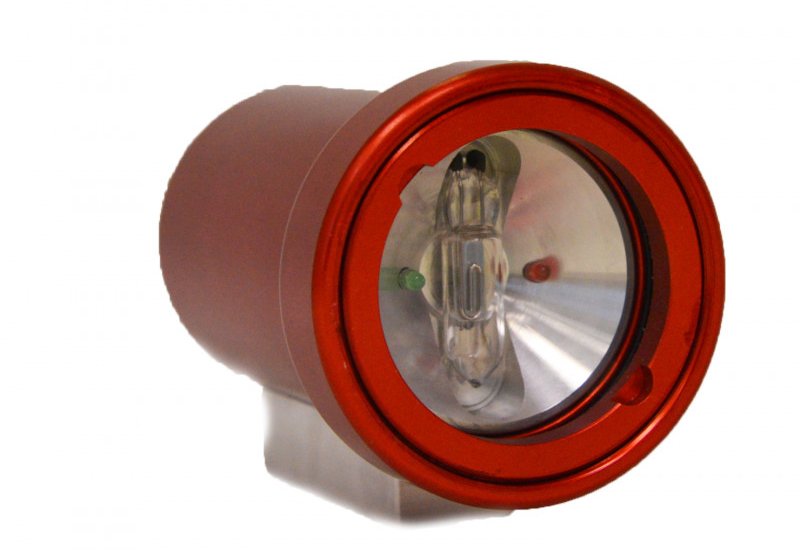{article Drass Menu Hyperbaric}[div float="left"][text][/div]{/article}
Flame Sensor

Please click HERE for a brochure detailing part numbers, spares and specifications → 
Proudly presenting the innovative Drass HUF (Hyperbaric Ultraviolet Flame) Sensor, the only flame sensor on the market to receive DNV Type Approval for use in a hyperbaric environment.
Pressure tested up to 50 bar and able to detect a flame at 10 times the distance of standard flame detectors, its fine tuned configuration ensures the detection of small flame inside a DDC or TUP within a few milliseconds. This product thereby provides ultimate reassurance for those working in safety-critical environments. The Drass HUF Sensor “sees” UV radiation within such a narrow band width that a single flame is detected before it is visible to the naked eye. What is more, the fine precision of this UV band range prevents sun or artificial lights from creating false alerts.
Upon fire recognition, the HUF Sensor signals a change in state from normal operation (green light) to fire alert (red light) thereby activating the alarm and fire extinguishing system, in accordance with company and HSE regulation. The HUF sensor is compatible with standard fire alarm panels including Consilium which are commonly part of Drass installations and bear the DNV Type Approval Certificate. Such an integration also ensures the immediate detection of short-circuit or cable break, thereby optimizing the system’s safety performance.
As a natural complement to the HUF Sensors, Drass provides smoke alarms that are DNV Type Approved, and validated by Drass under DNV supervision for hyperbaric use. They can also be connected to the Consilium Fire Alarm Panel, making the whole arrangement a single-stop solution against flame/ smoke risks.
The HUF sensor comes in a red anodized aluminium housing with a splash proof 10-way connector on the back of the unit. Internal electronics are encapsulated in resin thereby securing these from environment factors including temperature variations, moisture and dust. A standard installation includes two Flame Sensors for each chamber, each one installed on the upper part of opposite chamber walls thereby ensuring all angles are covered.
Commonly the sensors are managed from the control room and additional panels can be easily installed where required, making it possible to obtain a system which is tailored to customer needs. Sensors include a password protected RS232 service connection in order to check configuration and reconfigure desired parameters in terms of threshold, delay, latency. Sensors are supplied with cable connectors and with connection cable.
{article Quote}[text]{/article}